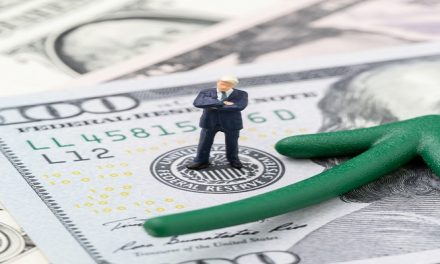There is a major event set to take place in the stock market this Wednesday.
It’s one that analysts and investors have been speculating about for months.
Some have attributed this single event to whether or not the U.S. economy heads into a recession in 2019.
At 2 p.m. EST, the Federal Reserve will announce its decision to raise interest rates or hold steady.
It’s what everyone has been increasingly anxious to hear about this month, and it has created a large part of the volatility we have seen in the stock market since October.
But, the must-watch T.V. part of this event starts at 2:30 p.m. EST.
At that moment, the current Fed Chair, Jerome Powell, will hold a press conference, discussing the decision to raise rates or hold steady.
And his comments will help investors determine the future path for rate hikes, or lack thereof, in 2019 and beyond.
While I’ll be paying close attention to these crucial events, we have already been tipped off on what to expect…
The End of the Road
Don’t get me wrong, the Fed’s announcement this Wednesday will be critical to note. It could alter the path for the U.S. economy in 2019.
But, last week, former Fed Chair Janet Yellen was speaking in New York about financial conditions and future of interest rates. Her comments let us in on the underlying reason we are seeing an interest-rate hike cycle at the moment. Here’s a hint: It’s almost over.
In her notes, she discussed one of the key rationales for raising rates in a period of economic growth. It wasn’t because of stable prices or unemployment — the Fed’s two government-given mandates — but another, equally important reason: stimulus.
In past decades, the Federal Reserve has cut interest rates by five percentage points in times of economic turmoil to stimulate a struggling economy.
The current target rate by the Fed is just 2.25%.
The stimulus from slashing five percentage points off interest rates versus less than half of that is a sizable difference.
In short, if the U.S. goes through an economic recession or depression once again — which it will eventually — the Fed wants to have some room to stimulate the economy by reducing interest rates.
This might lead you to believe the Fed is trying to get back to a 5% level, but that isn’t the case.
Yellen goes on to add that she believes interest rates are “likely to remain lower than they’ve been in past decades.”
And she mentions that short-term interest rates are usually around 3%.
If the Fed raises rates this Wednesday, the target rate would be at 2.5%, very close to a 3% level mentioned in her speech.
A Break Is in Sight
Thanks to Yellen’s comments last week, we know exactly what to expect from the Federal Reserve tomorrow. From that, we can dictate how the market will respond.
The Fed is likely to raise rates by a quarter of a point once again.
But, in Powell’s 2:30 p.m. discussion, look for him to play up the fact that 2019 will likely take a break from interest-rate hikes. Powell is expected to report that the Fed views the current level of interest rates as “near” a neutral level and further rate hikes will be data dependent.
In other words, the Fed will take a 6- to 12-month hiatus from raising rates to judge its toll on the economy.
During that time, the stock market will continue to rip higher.
Consumer spending is climbing, economic growth is sustainable and tax rebate checks early next year will likely be larger due to the tax bill stimulus in 2018.
Those economic benefits will help outweigh the drag from the current interest rate level and send the S&P 500 to new all-time highs in the new year.
Regards,

Chad Shoop, CMT
Editor, Automatic Profits Alert



